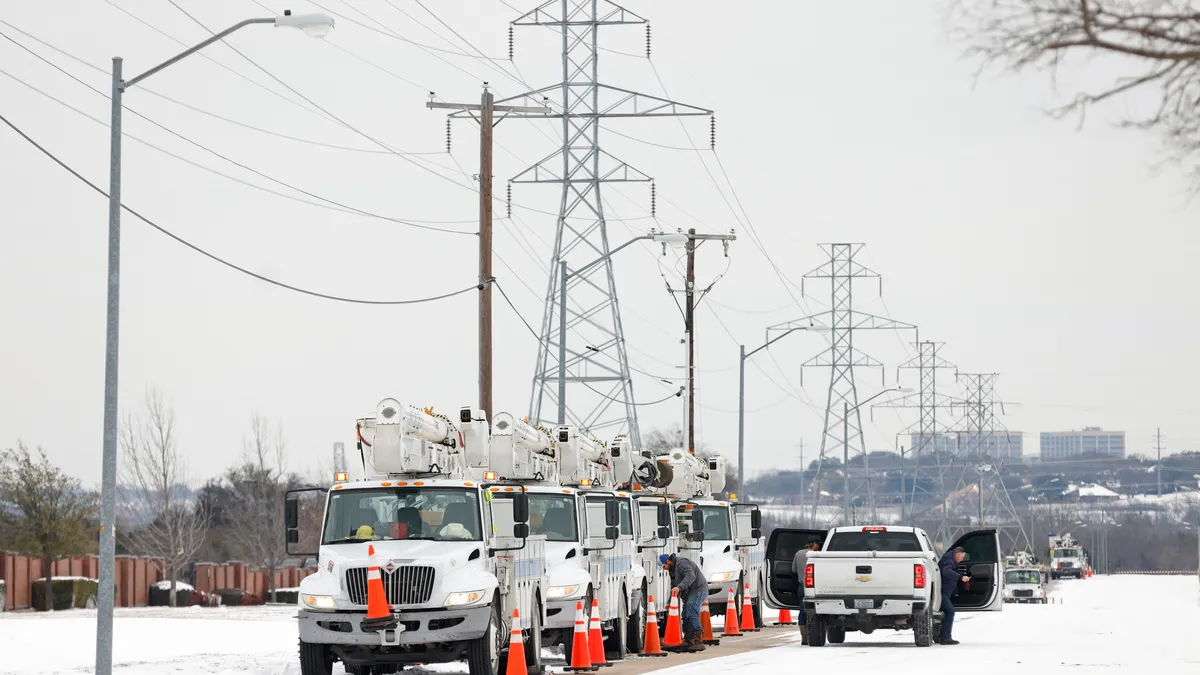The evolving U.S. power grid faces a host of long-term challenges, including resource adequacy, gas-electric coordination and physical and cyber resilience, according to a panel of experts. And those threats can be worsened by near-term concerns like supply chain constraints, they warned.
“We got lucky last year, that it was not a terrible storm season,” said Scott Aaronson, senior vice president of security and preparedness for the Edison Electric Institute, which represents investor-owned utilities. “But had it been a terrible storm season, I don't have a lot of confidence that we had all the material and equipment that we would have needed to put the system back together.”
Aaronson and other utility leaders discussed grid transformation and resilience efforts at the North American Electric Reliability Corp.’s 2023 Reliability Leadership Summit on Wednesday. The sector faces shortages of materials and equipment, including distribution, pole-top and pad-mount transformers, utility poles and conductor, he said.
EEI is “working closely” with equipment manufacturers and the Biden administration to “address those shortfalls in the near term. But that's only going to be exacerbated as we continue to grow out the system,” Aaronson said.
The head of the New England electric grid pointed to energy adequacy, with a focus on gas-electric coordination, and resource adequacy as major concerns.
“If we don't get our hands around those two, I think we're going to see more and more events like we've seen in the last two years,” Gordon Van Welie, president and CEO of ISO New England, said.
Around the country, in the past two winters, there have been power outages, price spikes and plant failures in extreme weather.
As renewable penetration grows, balancing resources will be needed to accommodate large ramping periods and provide voltage and frequency support, he said. A “primary vulnerability,” according to Van Welie, “is the premature retirement of resources that can provide this balancing energy and in the longer term, the risk that there will not be sufficient investment in balancing resources. As electrification drives load growth, I think there tends to be a bigger risk.”
Electrification of transportation and heating will lead to a doubling of New England electric load over the next few decades “and I think that trend is true outside of New England as well,” he said.
“We're going to need natural gas that backs up the grid for the foreseeable future, unless and until we come up with some of the new technology at scale,” said Tom Galloway, president and CEO of the North American Transmission Forum.
Galloway said the group will increasingly focus on severe resilience events and the development of transmission. Reaching national clean energy targets “will require a massive buildout,” he said.
Along with resilience concerns, energy must remain affordable, said Mike Wise, senior vice president of regulatory and market strategy for Golden Spread Electric Cooperative in Texas.
National electricity prices rose 14.3% in 2022, relative to 2021, more than double the overall rate of inflation. And electricity to heat homes is expected to cost 10.2% more this winter over last year, according to the National Energy Assistance Directors’ Association.
“Reliability, yes, utmost. But affordability has got to be balanced in there,” Wise said. Golden Spread is a generation and transmission cooperative in Southwest Power Pool, and Wise said its members serve areas where there are many customers below the poverty line.
“As we pay for this transition to a clean energy economy, we cannot forget about that portion of our population,” he said.















